How to Establish Science Classroom Expectations for Middle School
Thinking of science classroom expectations for middle school makes me sing, “It’s the most wonderful time of the year!” Okay, maybe the start of summer is the most wonderful time, but starting a new year is so refreshing too. What’s exciting and important is establishing classroom expectations and procedures.
No matter how long you’ve been teaching- brand new or veteran- this is a crucial step in classroom management. Read my blog post, 3 Essential Components for Science Classroom Management, for more about classroom management.
We also know that setting classroom expectations for middle school isn’t just for the first day. It’s for the first two to six weeks. And it’s also for anytime we do something new. It’s something we do all year long. We must teach, practice, reinforce, and review classroom expectations in order for our students to be successful in our classrooms.
Here is a complete resource to help with classroom management all year long!
In this Post
We’ll look at three areas that we will need to set up our science classroom expectations for middle school and procedures. We have general classroom routines, science procedures, and cooperative learning.
I will give some ideas for setting classroom expectations at the beginning of class, during class, and at the end of class. Lab safety and procedures will be covered as well as some cooperative learning strategies for students working in groups.
Be sure to get your free guide 7 Daily Must-Do Routines to Run Your Science Classroom Like a Pro today!
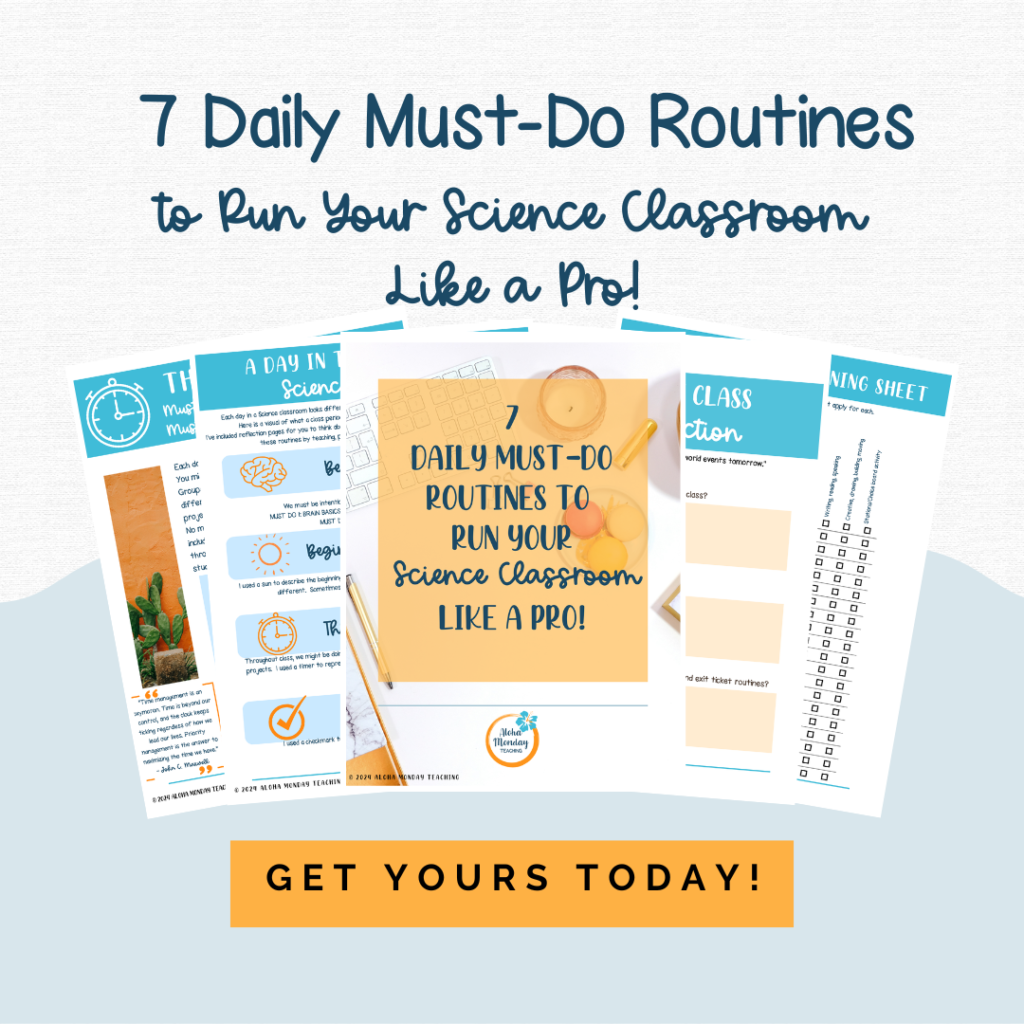
Disclosure: This post contains some affiliate links for your convenience. As an Amazon Associate I earn from qualifying purchases with no cost to you.
General Classroom Routines
Make a list of everything you can think of that you may need to teach your students. Remember, every teacher is different, and all students need to learn the expectations in your classroom. I keep a list of my expectations and procedures on my computer. I review it every summer as I reflect on the past year, and prepare for the new year.
Check with your grade-level team to be consistent with procedures such as using the restroom, eating in class, or transitioning between classes. Most schools or teams will have procedures in place.
When thinking of general classroom routines, imagine students entering the classroom and jot down everything they may need to do at the beginning of class.
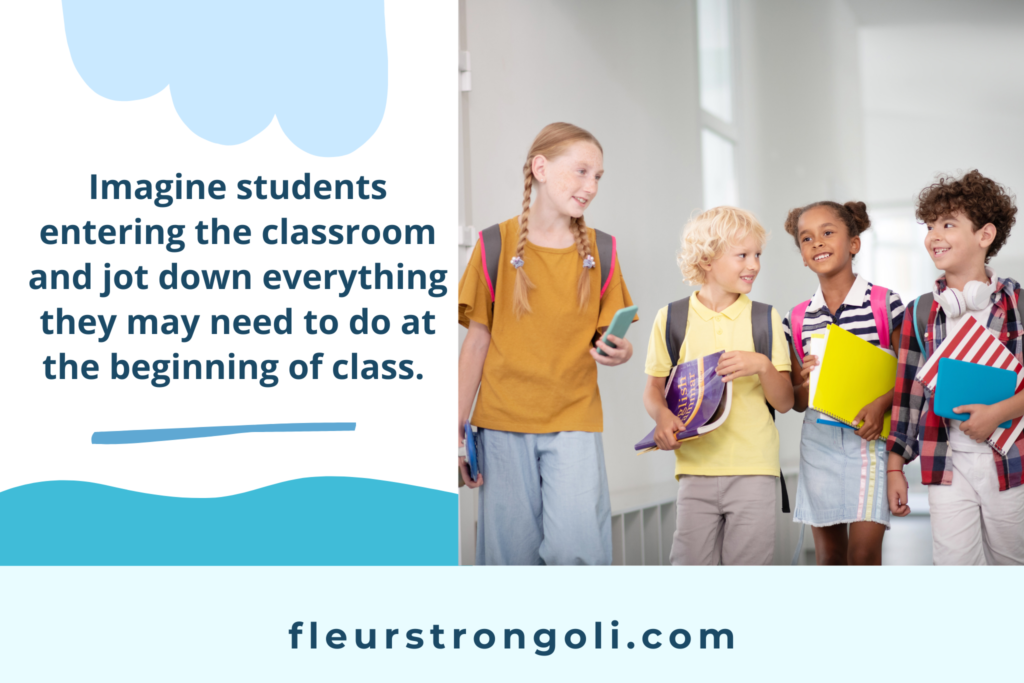
Beginning of Class
Here are some ideas and examples:
Walking into the classroom– Students should walk in quietly.
Turning in homework or papers– Students will turn in work to the basket and important papers to me.
Bell work or Entrance Ticket– Posted on the board, students will know to get a paper from the magnetic pocket on the board. Get Classroom Expectations Slideshow here.
Unpacking backpack and preparing materials for day– Read the board to find out what materials are needed. Backpacks should be at their feet. Water bottles on the floor.

During Class
Next, think of things students need to do during class.
Sharpen pencils– Raise hand to ask. If it’s during independent work time, students may sharpen pencils without permission. Have a cup of sharpened pencils ready. Assign a student from each class to sharpen pencils for the cup.
Ask questions– Raise hand, sticky note on desk.
Take notes or work on assignments– Materials should be ready and students should be participating. Have closed notes prepared for students with accommodations. When working, students can work at desks or at lab tables.
Get materials from another part of the room– Materials like paper or extra worksheets are in a designated part of the room. Students can get up anytime during independent work time to get materials. Otherwise, ask for permission if teacher is teaching.
Pass out papers– Call on 1-2 students to pass out papers or set the papers around the room and have students walk around to get them. They can get papers when they enter the classroom before sitting down. Have one or two people from each group get the papers for their group.
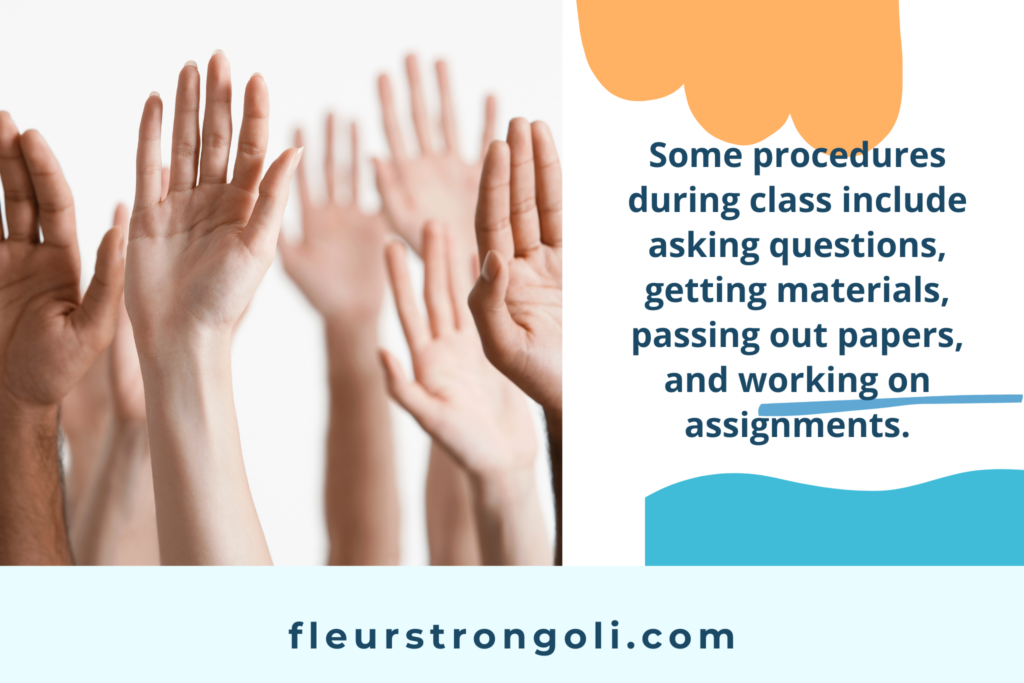
Ending Class
Finally, have your procedures set for ending class.
Packing up– Students will pack up all materials and bring home unfinished work. They may also store unfinished assignments, such as projects, in the lab tables.
Turning in work– Students will turn in work to the basket.
Writing in agenda– Students should write down their homework or unfinished assignments.
Cleaning up– The desk and floor around the student’s desk should be clean. Play “Magic Piece of Trash” if the room is extra messy. Yes, that works in middle school too! You secretly pick 2-4 pieces of trash that earns a prize. As students clean the room, they show you the trash they collected. When the room is clean, announce the magic pieces of trash and the winners. They receive a school reward or a piece of candy.
Leaving the classroom– The biggest thing for me is that the teacher dismisses the students, not the bell. Students are usually lined up near the door or standing at their desks while they wait for me to dismiss them.
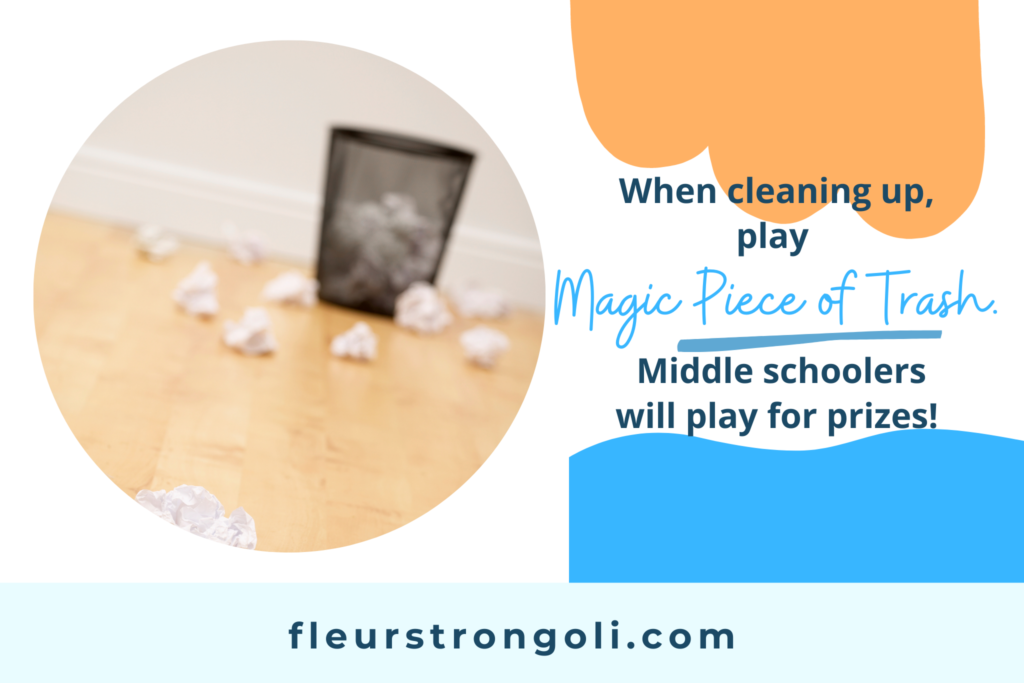
Science Classroom Expectations for Middle School and Procedures
Now that you have some general routines in mind, let’s take a look at Science classroom expectations and procedures.
Science lab safety rules
At the very beginning of the school year, every Science teacher goes over the safety rules. You’ll notice that textbooks, school provided posters, and internet searches will show different sets of rules. Some are brief, while others are very descriptive.
I like to use ten safety rules to keep it simple for our middle schools, but detailed enough so the students know that the rules cover everything. I also refer to the rules in our textbooks to show them more information. You can get my Science Lab Safety Rules unit here.
Students must sign a contract in order to participate in labs. If they don’t follow the rules, they will have to sit out and fill out a reflection form.
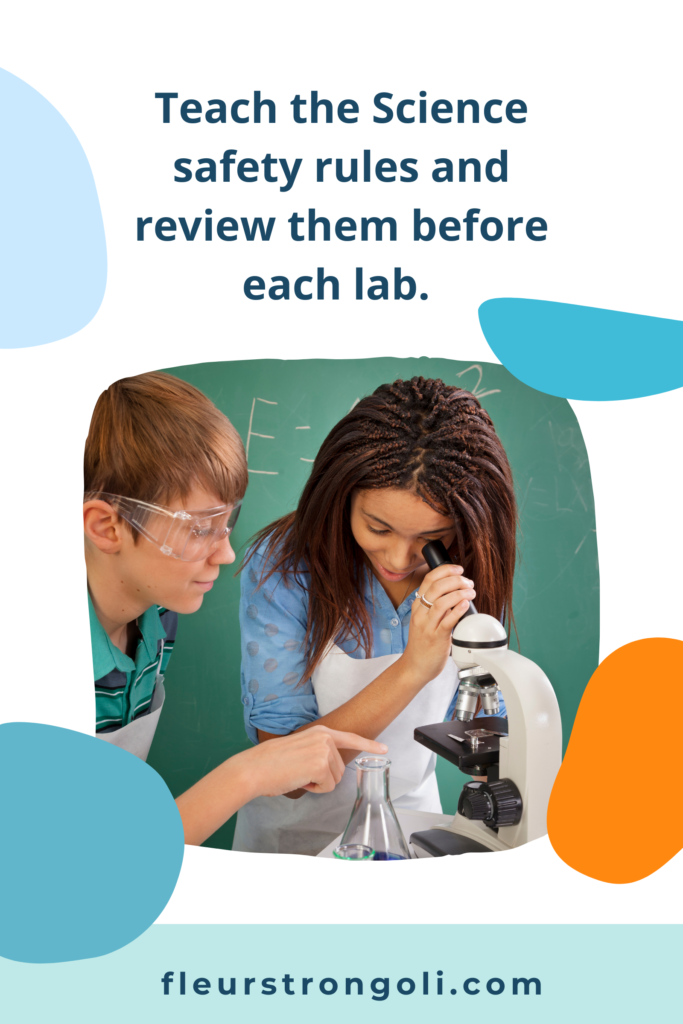
Lab procedures
In addition to following the safety rules, students will also follow directions and procedures for each lab. Some routines to teach are working in the lab area, gathering materials, beginning the lab, collecting data, and cleaning up the lab area.
Working in the lab area– I assign lab groups to a lab station. Students must stay at their lab station while working. They must also keep the lab area clean while they are working.
Gathering materials– I assign one student from each group to gather materials. I set out materials on a lab table and they gather it cafeteria style. They make a line, grab a tray, and start collecting the materials.
Beginning the lab– I assign a different student to begin the lab. Then they take turns doing a part of the lab.
Collecting data– As they work, they have a lab sheet to write down data and observations.
Cleaning up– I go over the cleaning directions before they even begin the lab. That way, they know what to do. I post the clean up slide on the screen towards the end of the lab, so they have the directions. Every student is expected to help clean up.
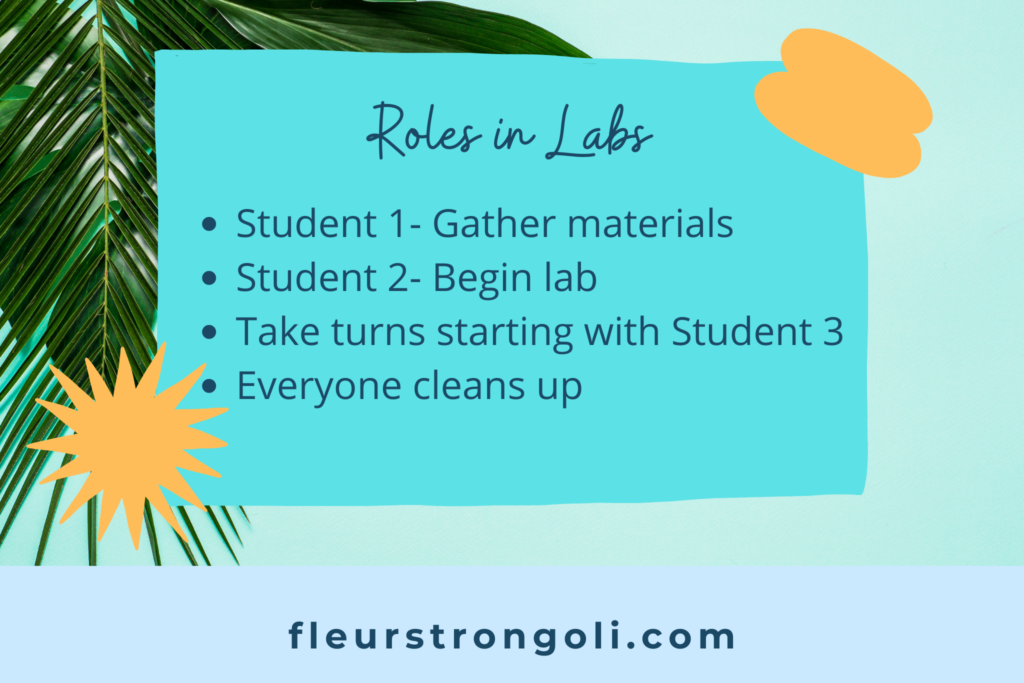
Cooperative Learning
I mentioned assigning a student to do certain jobs during a lab. Let’s take a look at cooperative learning in the Science classroom.
Groups at desks– I have my students seated in rows, and group them by fours. I assign each student a number 1-4. You can read more about this in my blog post, 2 Simple Steps for an Effective Science Classroom Setup.
When I do this, I am able to call on students for participation, to respond, or to get materials. For example, when I post a discussion question, I give the students time to formulate responses together. Then I call on a student, such as Student 2. All of the 2’s in the class will stand up and take turns sharing their responses.
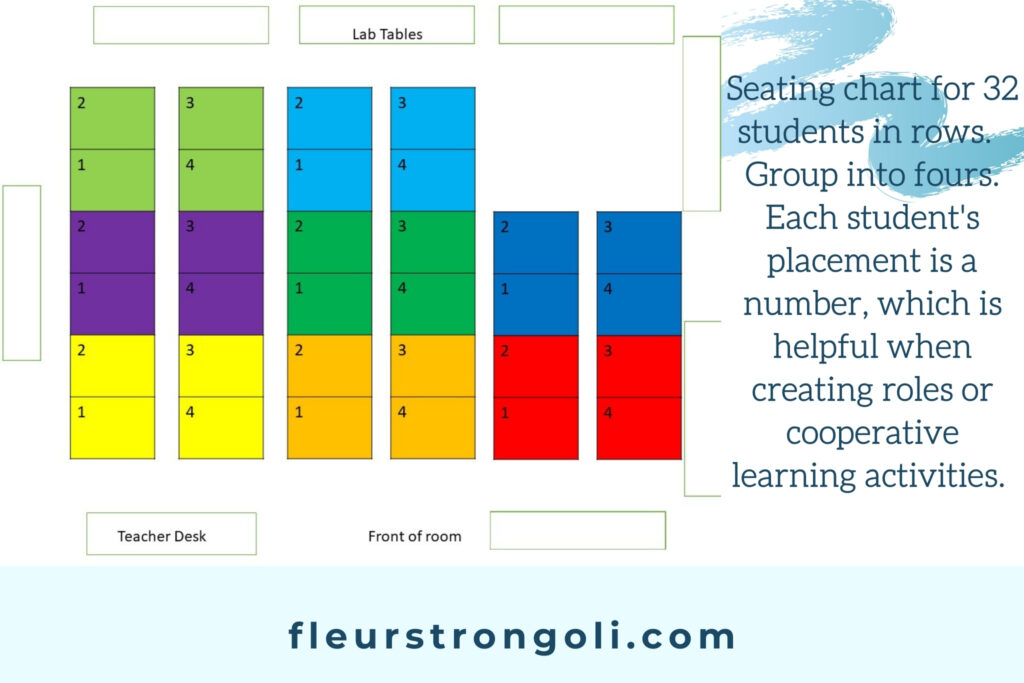
Groups in labs– If I change the groups for labs, I list their names on the screen. The first person is the materials person (gather materials). The second person is the starter (they start the lab), and then they take turns beginning with the third person. If I keep their groups the same, I rotate the student numbers and roles. For example, Student 3 would gather materials, Student 4 would start the lab, and then Student 1 would have the next turn.
Partner work– I have students pair up with the person sitting next to them, or they can choose someone to work with. I’m open to students working around the room when they have independent work time. Some students prefer to stand, while others don’t mind sitting. They just know when working with partners that each person must contribute, and they have to work on task. Otherwise, they may lose the privilege of working with a partner. I also offer the choice to work with a partner or individually for many assignments.
Wrap Up
Remember that classroom expectations for middle school need to be set and procedures and routines must be taught, practiced, reinforced, and reviewed for success. You can and should teach and review procedures all year long. Consider your general classroom routines such as entering the room, expectations during class, and ending class. Science classroom procedures are specific to labs. And working together is essential in a science classroom, so some cooperative learning strategies are helpful.
Your Turn
How do you envision your Science classroom functioning? Brainstorm a list of routines and procedures you want your students to know. Then teach, practice, and reinforce them.
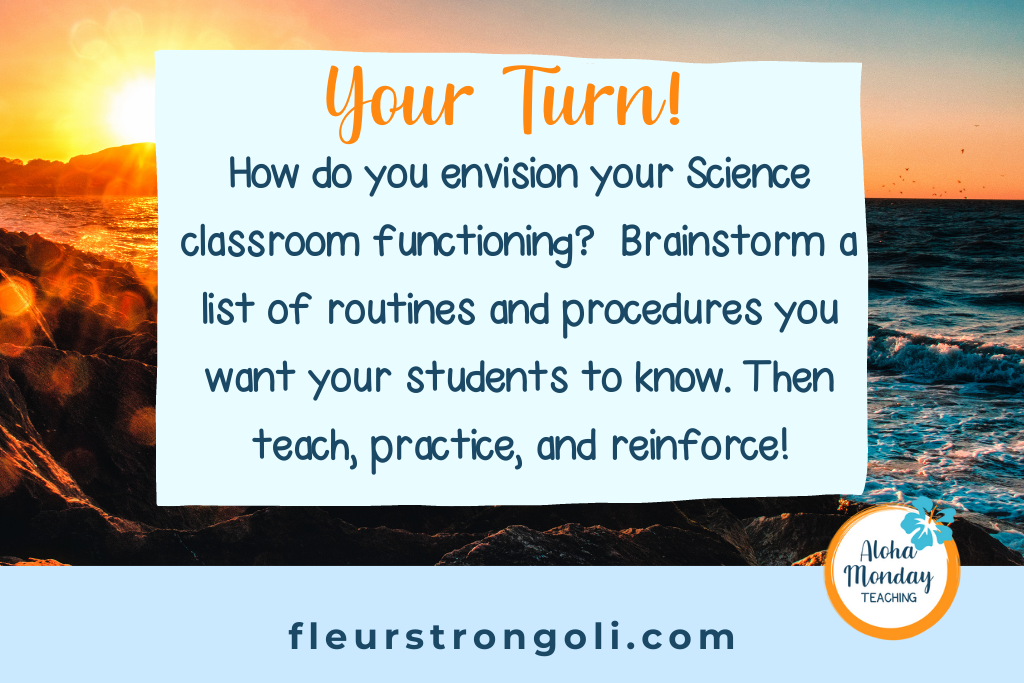
Read more
3 Essential Components for Science Classroom Management
2 Simple Steps for an Effective Science Classroom Setup

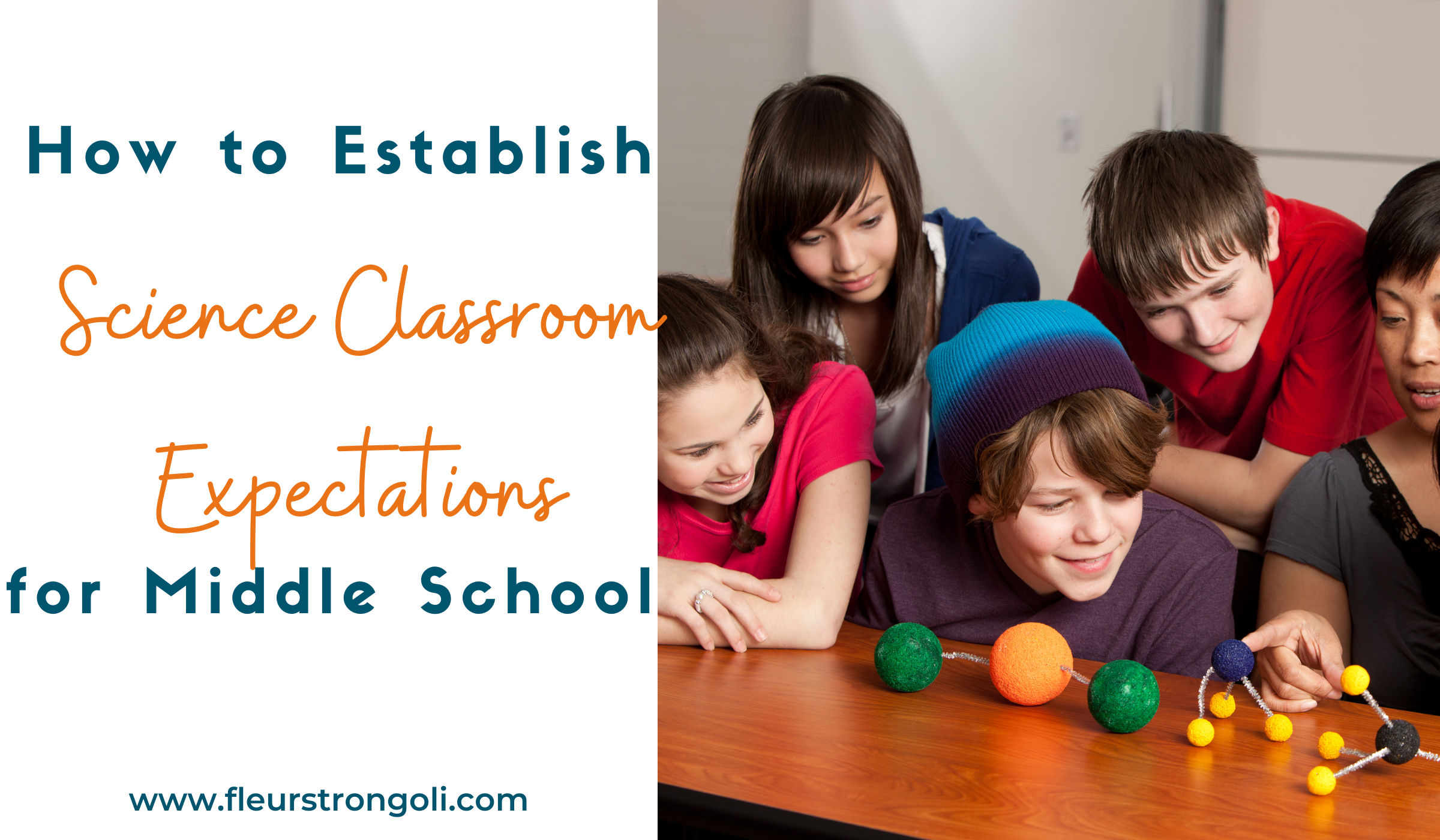

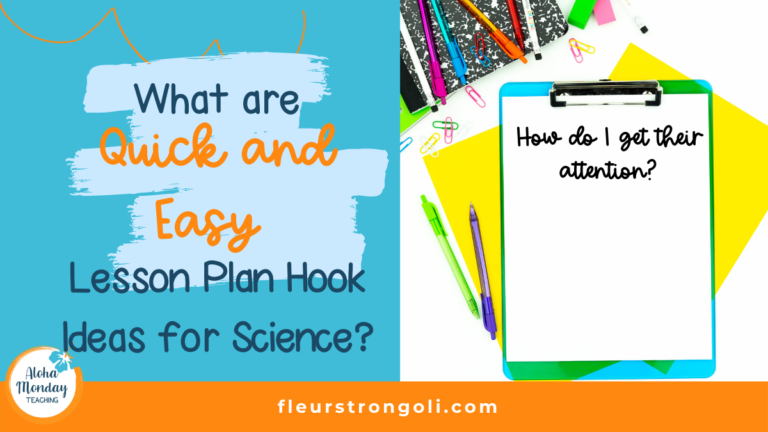

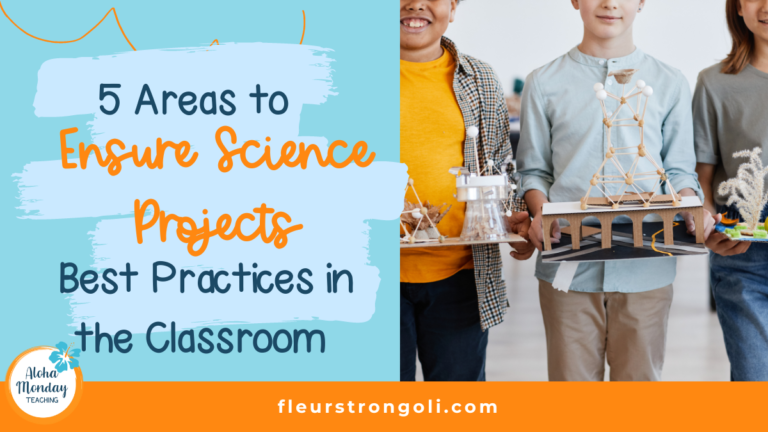
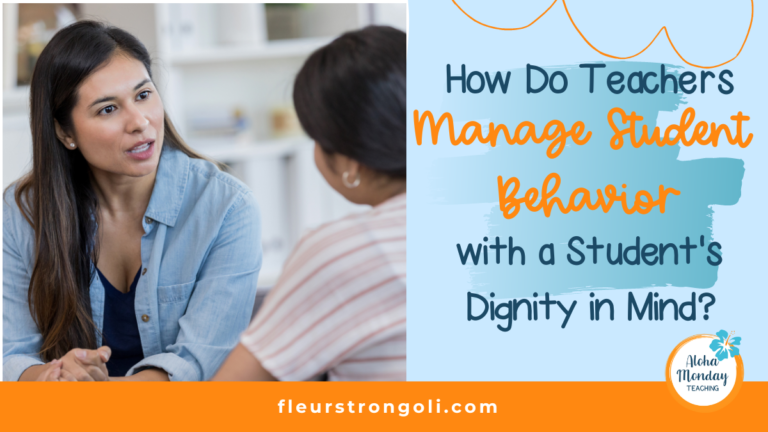

4 Comments